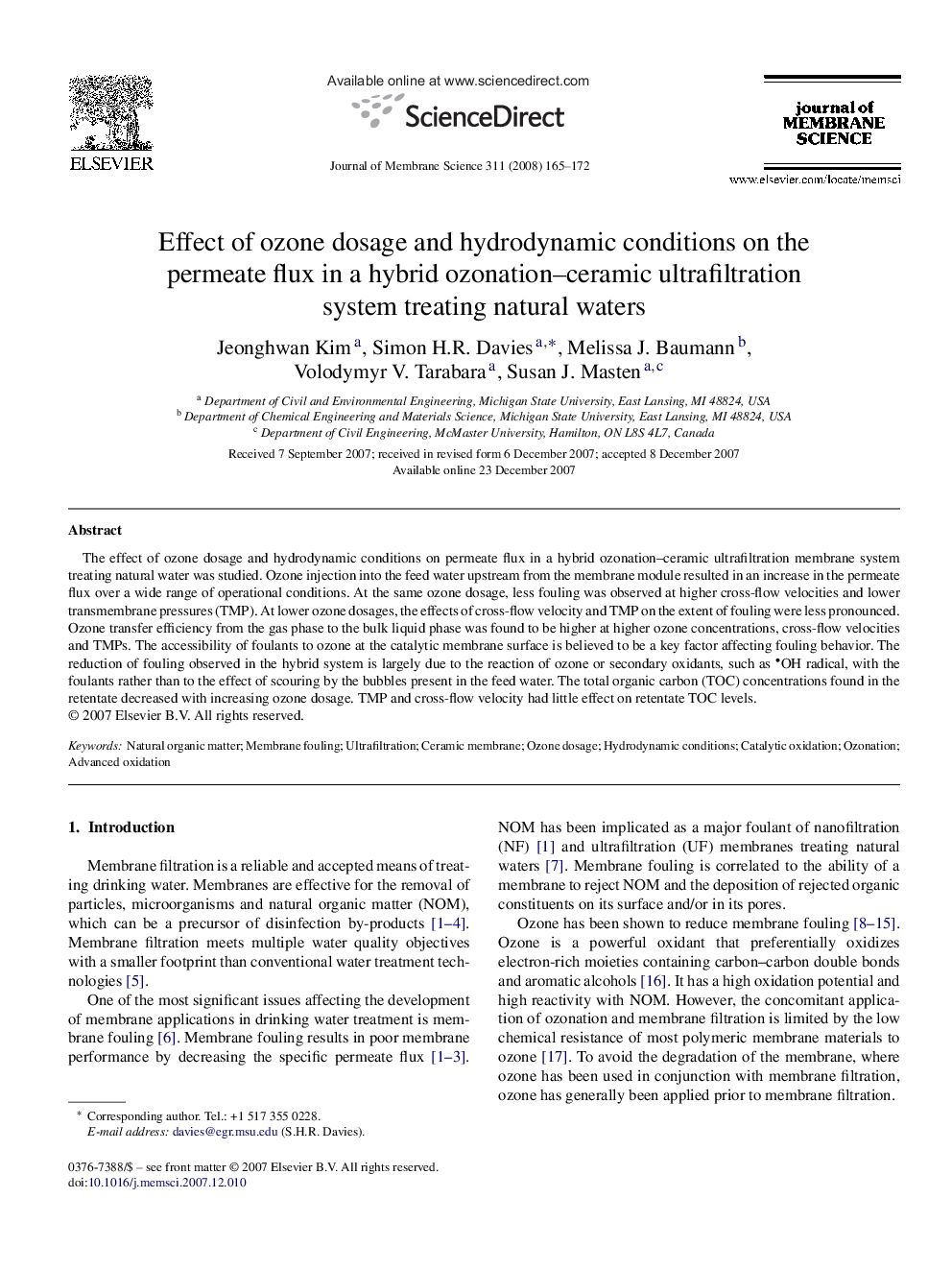| Article ID | Journal | Published Year | Pages | File Type |
|---|---|---|---|---|
| 638062 | Journal of Membrane Science | 2008 | 8 Pages |
The effect of ozone dosage and hydrodynamic conditions on permeate flux in a hybrid ozonation–ceramic ultrafiltration membrane system treating natural water was studied. Ozone injection into the feed water upstream from the membrane module resulted in an increase in the permeate flux over a wide range of operational conditions. At the same ozone dosage, less fouling was observed at higher cross-flow velocities and lower transmembrane pressures (TMP). At lower ozone dosages, the effects of cross-flow velocity and TMP on the extent of fouling were less pronounced. Ozone transfer efficiency from the gas phase to the bulk liquid phase was found to be higher at higher ozone concentrations, cross-flow velocities and TMPs. The accessibility of foulants to ozone at the catalytic membrane surface is believed to be a key factor affecting fouling behavior. The reduction of fouling observed in the hybrid system is largely due to the reaction of ozone or secondary oxidants, such as OH radical, with the foulants rather than to the effect of scouring by the bubbles present in the feed water. The total organic carbon (TOC) concentrations found in the retentate decreased with increasing ozone dosage. TMP and cross-flow velocity had little effect on retentate TOC levels.
